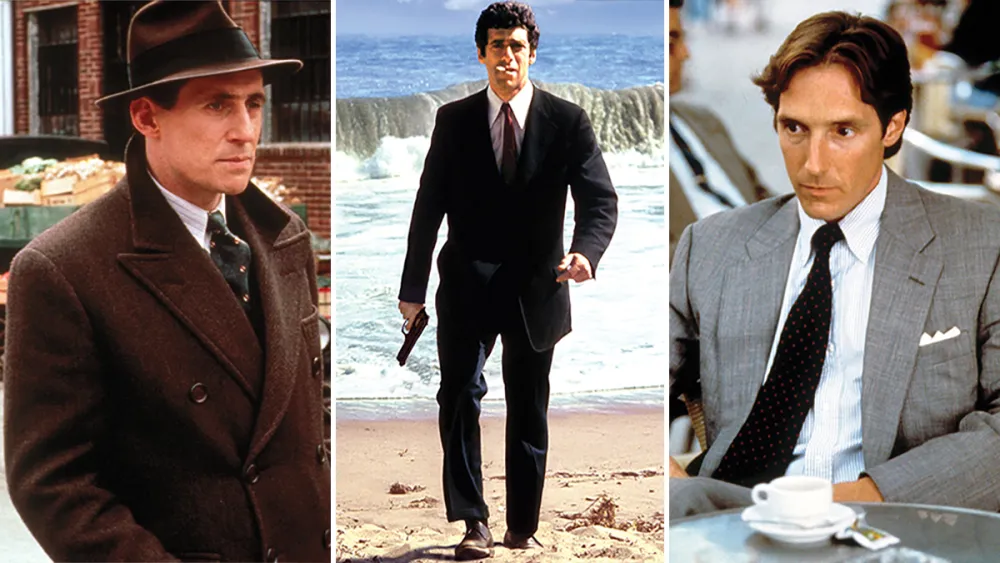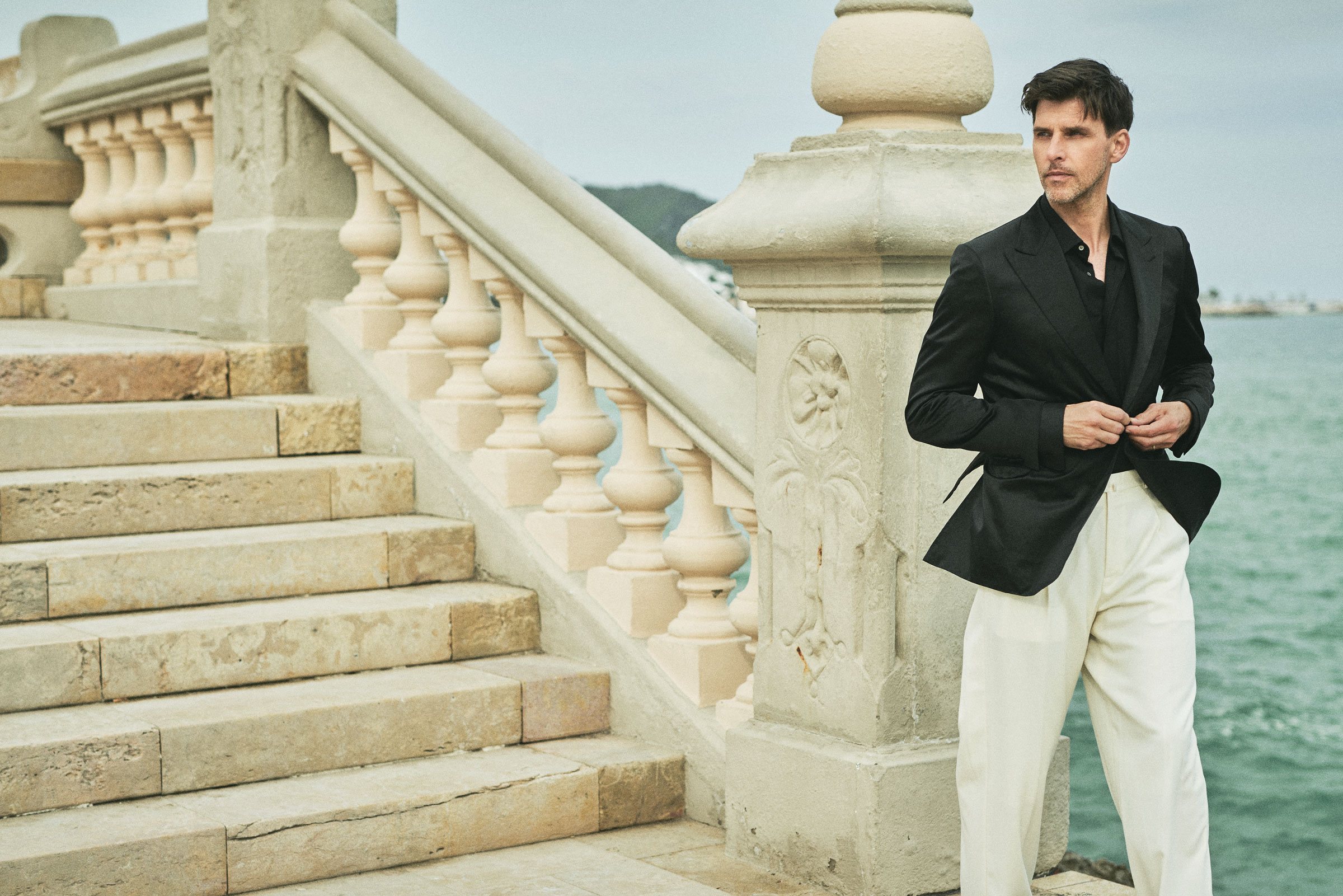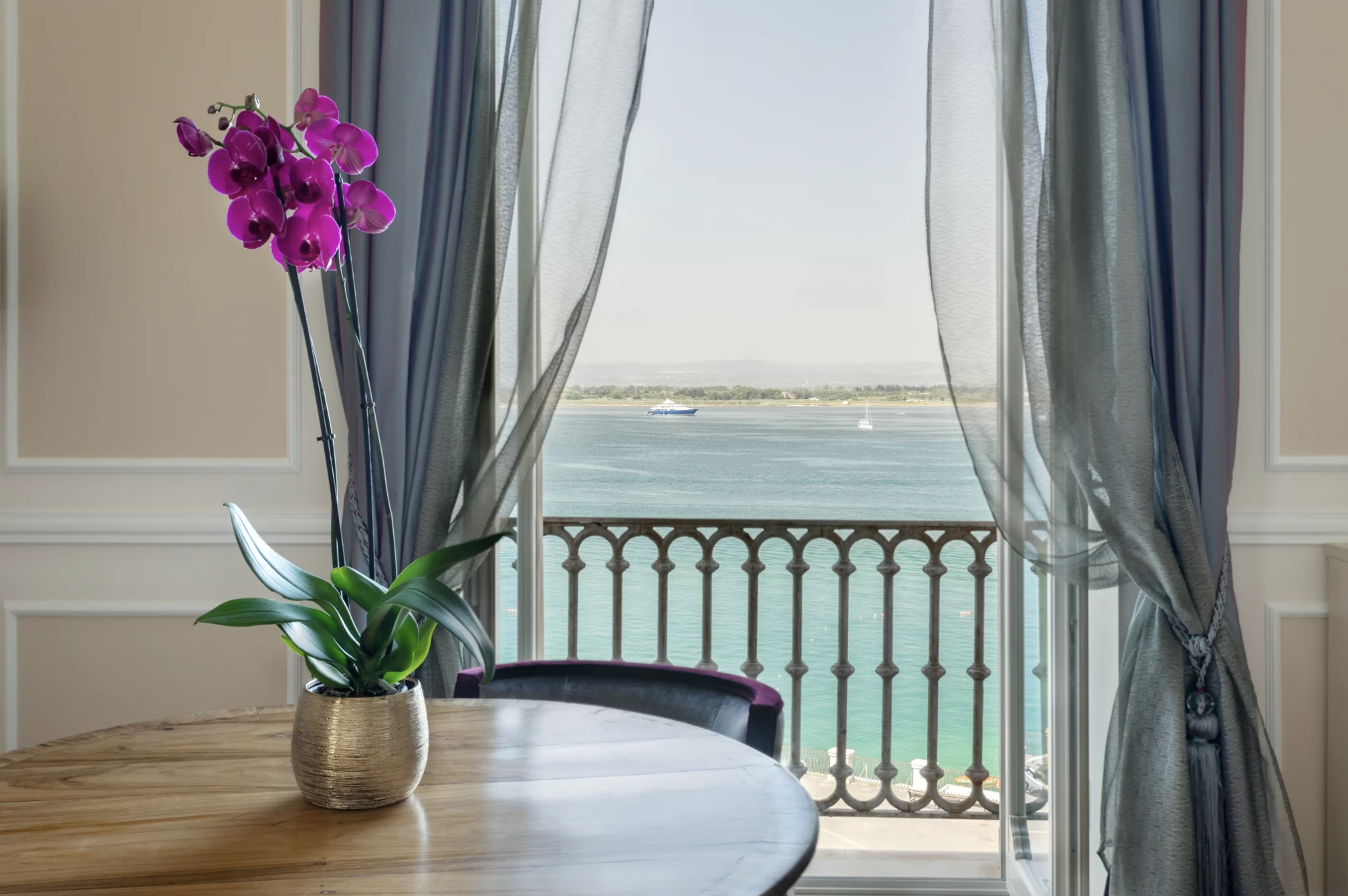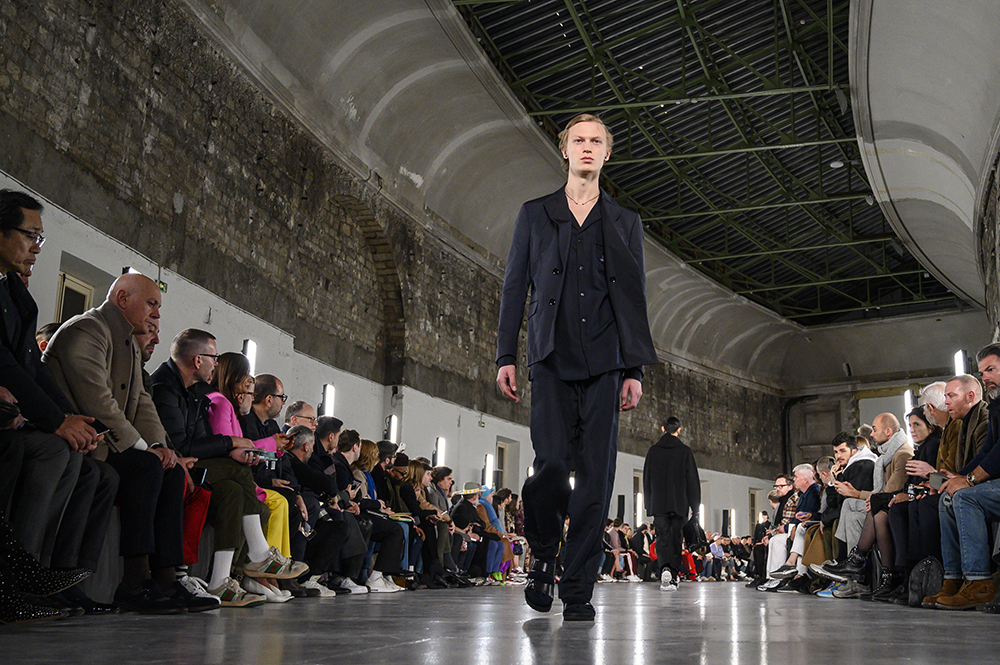
Will Suits Make A Return To The Office?
Autumn runways saw the welcome return of tailoring – but where to from here after a lengthy and casual stint working from home?
Related articles
One year ago, the men’s retail community was all abuzz at the prospect of tailored clothing rebounding as streetwear started to wane.
Fast-forward to 2020 when the coronavirus pandemic stopped business in its tracks and left everyone working from home in tracksuit pants.
So when the situation finally normalises and men are able to return to their offices — whenever that may be — will the once-expected popularity of tailored clothing become a reality, or a lost opportunity?
Designers and retailers remain upbeat, expecting pent-up demand to spur sales of suits and sport coats as guys happily ditch their work-from-home attire and get dressed up when they can finally get back to the office.
“Guys inherently like to get dressed up,” said designer Joseph Abboud.
Dressing well helps men feel powerful, and considering how out of control the world has felt in fighting the COVID-19 pandemic, a suit is an easy, but highly visible, statement.
But it won’t be his grandfather’s suit. Instead, the power suit of 2020 will be more comfortable with technical attributes such as stretch, antimicrobial properties, antiwrinkle and other performance features. The contemporary silhouette is often oversize, double-breasted and boxy with retro Nineties references, while some guys may pair it with everything from upscale T-shirts to sneakers.
Designers Dish on Tailored’s Return
For Pierpaolo Piccioli, creative director of Valentino, today’s tailored clothing is much less formal than in the past.
“I believe that the sense of intimacy behind the art of tailoring is what matters,” he said. “I want to dismiss the idea of formalwear as a uniform by making it more sensitive and romantic. I think a man has to change his perspective and take away some formalities from the formal. Formalwear has evolved by eliminating the bossiness that has always characterised it.”
Alessandro Dell’Acqua, founder and creative director of No. 21, also sees a new reality for tailored clothing, particularly in light of the pandemic.
“I really think that after long days spent at home wearing super comfortable pieces, men will definitely be willing to return to wearing suits or more sartorial designs,” he said. But the suit is not traditional. Instead, he said, “I imagine a revisited formal suit influenced by feminine elements, as well as characterised by intentional mistakes. An example: the double-breasted blazer will be completely unlined and maybe paired with shorts or with slim-fit pants. In addition, coats will be deconstructed, striped shirts will be sleeveless and knitted tops will feature one-shoulder cuts. To sum up, I imagine a slim, elongated silhouette, not touched by streetwear and sportswear references.”
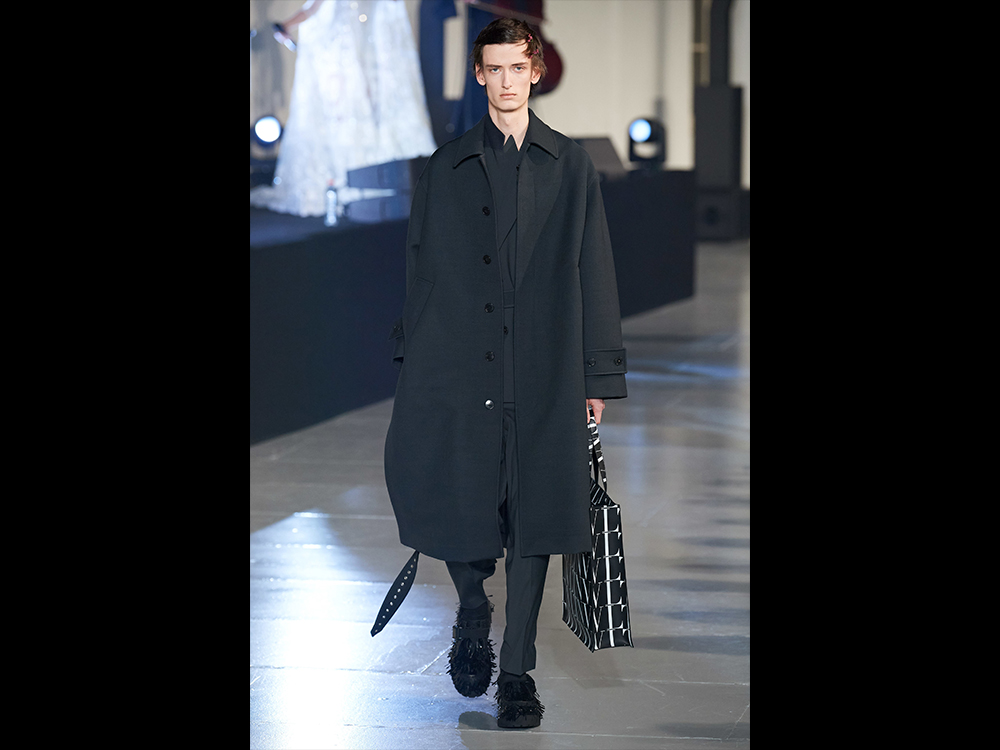
Sir Paul Smith said he is “already dreaming of the day I get back to work properly and I’m looking forward to getting dressed up in a suit, shirt, tie and proper shoes, in a way I haven’t done for years. So many people will have spent so much time trapped at home in their casual home clothes, I think we’ll see an interesting return to getting dressed up and feeling special. For me that’s definitely helped by the elegance of a good suit.”
For Smith, today’s suit “is definitely divided into two quite distinct categories. There is the suit as we’ve known it in recent years: it fits the body, it’s smart and elegant in a more traditional manner and it’s worn with a tie and leather shoes. Then there is the suit that everybody has been talking about this season: the more relaxed, softly constructed suit, sometimes in colour, with more volume and worn in a more alternative way whether with a T-shirt, trainers or otherwise. And so, the suit for me has an enormous relevance this winter but the choice is yours which one you select.”
Sander Lak, creative director of Sies Marjan, too, believes men will be itching to get dressed up again as soon as they can.
“We have actually been talking about this a lot, as many of my team members have joked about living in their sweats and I think we are all getting a bit sick of it. I think after we no longer have to social distance, everyone will be racing to the bars and restaurants and exploring the rest of their closets. I think that there is a way to still dress relaxed, and comfortably without having to live in your sweatsuit.”
Lak added: “In a way, part of the Sies Marjan uniform has been relaxed items such as our fluid cord pieces. You don’t have to sacrifice comfort to dress up, so I do think people will incorporate that idea into their day-to-day [lives] after this is over. I also think that we will embrace and appreciate those moments of getting dressed up for a dinner at our favourite restaurant or dressing up to go to a play or putting on our favourite suit to go to the office. The rest of our wardrobes are screaming, ‘Wear me!’”
Pierre Mahéo, founder and designer of the Paris-based Officine Générale brand, said he believes tailored clothing “has already taken over the momentum of streetwear. This was evident when some of the most iconic streetwear brands included suiting in their collections and on the runway during men’s fashion week last June.”
And even though he doesn’t believe everyone will immediately jump to wearing suits or jackets, he sees “a progressive curve.”
“When quarantine is over, I don’t believe we’ll be seeing sleepy zombies wearing sweats to work all the time. Going out and getting dressed is something we are all waiting for.”
But the tailoring will be different than in the past. “Tailored clothing was certainly a big trend on the runway. I think tailoring will be back, but not in the literal way. It will be in a much cooler, creative way. I think guys will play and mix up their tailored clothing — it’s the only way to make a suit cool again. I don’t think guys want to wear a suit in the Gordon Gekko way. It has to be dressed down, with a touch of nonchalance, getting rid of the serious part of it.”
Heron Preston, who has been a leader of the streetwear movement, said his most recent collection includes more tailoring. “I think that is because we’re experiencing the maturing of a generation of designers, creatives, and fans. We all grew up a bit and started to appreciate more than just T-shirts and denim, and the collection is a reflection of that real-life process. That process also presented an exciting opportunity to evolve my perspective by adding twists on conventional and traditional designs. It was a creative exercise to take what was meant for the office and envision it on the streets, to loosen up ‘formalwear’ and wipe it free of corporation through a filter of culture.”
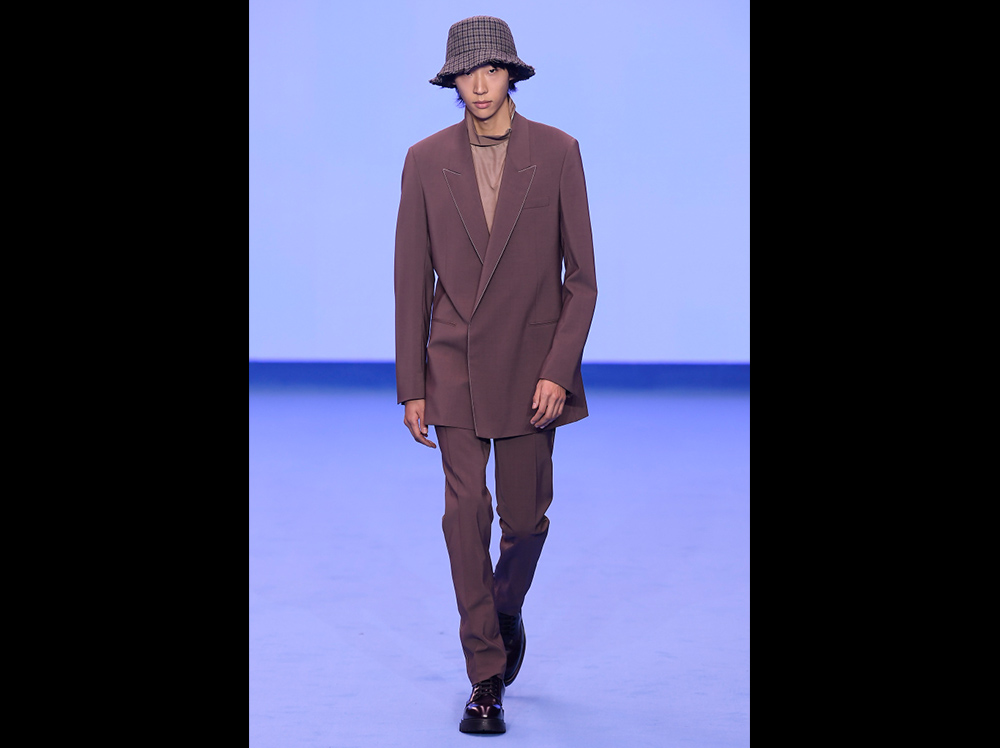
Paul Smith Men’s Autumn 2020
Preston said he hopes that when the pandemic passes, “people come out of this with changed perspectives, and I think that fresh mind-set will be apparent in our approach to fashion. When we came out of the last recession, people went back to the basics and more practical clothing. I think when we come out of this time, people will be wanting to get behind brands that stand for something. I think tailoring will be important because we are hurting economically and people are looking for jobs, but I am hoping that we don’t all just replicate what we were doing before. I think we’ll be looking for creative ways to evolve the system, be it changing our buying habits, reprioritising elements of our lives or simply finding styles that deconstruct traditional.”
He believes that people are “realizing all the trivial things that we took for granted and we will hopefully come out of the other side with a new vantage point, a reset perspective toward the world. I think this can also be applied to fashion in that we will reset all this noise that we have been creating. This has been an equalizing experience, and going back to basics will make it easier for people to relate to one another once this is over.”
Willy Chavarria also believes the impact of COVID-19 will be long-lasting. “Going out in public is more precious to us. It will be from now on,” he said. “We will want to look better and feel better than we have throughout the duration of the crisis. For this reason, we will embrace tailoring, but it will be worn differently. We will have a more sensitive and relaxed approach in the way we present ourselves.”
Chavarria said that after experiencing loss, everyone will have “a new sense of values which I think will guide us away from opulence and more toward a gentler way of being. The mixing of casual with tailored will be more ever-present. Even now I find myself getting dressed to look good even if just to get Clorox wipes and pasta.”
Chavarria’s Autumn’20 collection consists of almost all tailored styles, he said, and uses recycled materials. “It is a eulogy for the world as we once knew it.” The presentation and video that he hosted to show the collection actually turned out to be a “foreshadowing of what was later to come,” he said. “When I designed it, I was sad for the world. I felt that in many ways man was a lost cause. But now, I actually find inspiration in the way that man is getting a slap across the face and being forced to wake up. Fashion will reflect this feeling.”
Patrick Grant, designer and owner of Norton & Sons, E. Tautz and Community Clothing, said: “I imagine people will be longing for an opportunity to get dressed up a bit, with a bit of distance. It might be that ath-leisure reminds them of lockdown wear. Trying to predict what people will feel is too tough of a question, but I do think this is an opportunity for everybody to reflect on the way we live. And in fashion, things move in cycles. The pendulum swings in one way, and then all the pioneers, the Virgil Ablohs and the cool kids were all into one thing. But when everyone else piles in, they go the other way.
“If you are a cool guy, you don’t want to be wearing the stuff everyone else is wearing. I’m a person who’s into clothes, and I know that I just get bored. I got bored with slim, fitted suits, that’s why we went to looser and baggier suits. Tailoring has moved on a lot, it feels very different now. It’s back to this really nice ‘Miami Vice’ vibe, which I really like. It feels fresh. Ath-leisure doesn’t feel fresh to me, it feels like every single teenage boy on the streets of England wearing black Nike trainers, black sweatpants, black top. It’s kind of boring.”
But not everyone thinks the pandemic will immediately boost interest in tailored clothing.
According to Palm Angels founder and creative director Francesco Ragazzi, “People will have a bigger desire to take care of themselves at all levels. I think this will also impact the way people will dress, but I don’t think that the sartorial suiting will be the answer to this crisis. I hope that consumers will rediscover quality, will look for beautifully crafted products, giving more attention to fabrics and yarns, one of Italy’s true excellences. I think this might be the answer.”
He said he hopes that fashion in the future “will be less driven by trends, but that it will be more connected to reality. I don’t think that suiting really reflects the moment we are living or what we will experience in the future. And I think this ‘future’ will last for many months.”
Mike Amiri, founder and designer of the Amiri label, weighed in: “Evolution of all things is natural and necessary. The spirit of curation within streetwear will simply evolve into finer things. Easy tailoring mixed with new fabrications, relaxed proportions, and novel details feels like a natural progression.” He added that the “relaxed nature of sweatpants and comfort clothing” guys are becoming so fond of during the virus, “will now be an addition to the elevated street wardrobe. However, it would be paired with a beautiful coat or leather jacket — a perfect mix between both leisure and luxury.”
Daisuke Obana, founder and designer of N. Hoolywood, also believes the pandemic will drastically change the way people think about clothes. “Even tomorrow is unpredictable,” he said. And while he showed a lot of tailored clothing in his last collections, he’s just not sure how it will all shake out. “In the first place, easy wear will be inevitable. I guess people will be creative and wear what’s in front of them for a while. And the stylish person will play with accessories and styling, Or they will have no interest in fashion at all. I have no idea.”
For Abboud, when things finally return to some sense of normalcy, he believes consumers will seek “comfort and safety” in both their lives as well as their wardrobes. And he’s not expecting tailored clothing to be the immediate beneficiary of this trend.
“When we came out of financial crisis of 2009, the last thing to come back was men’s wear,” he said. Guys were quick to take care of their children and their wives as well as responsibilities such as mortgages. Their wardrobes had to wait. “Clothing tends to be the last thing out.”
And custom clothing, a saviour of a lot of men’s wear manufacturers pre-COVID-19, is expected to have a particularly tough time. “The custom business will take a halt,” Abboud predicted, saying the category will be viewed as “conspicuous consumption,” a major no-no with all the unemployment and angst sweeping the world.
That being said, Abboud does expect the softer side of the clothing market — unconstructed sport coats, sophisticated pants with technical attributes, and shirts with stretch and antimicrobial features — to be the first place men gravitate when they do start shopping again. “The softer side of tailored clothing will thrive more quickly,” Abboud said.
Brands See Bright Future For Suits
Some of the more-traditional tailored clothing brands also — not surprisingly — claim to be optimistic about what the future holds in terms of the sector, but they too have evolved to meet the demand of a modern customer.
Tom Kalenderian, strategic adviser to Ermenegildo Zegna in the U.S., said “there will definitely be a change when we get back to reality.” And part of that change is that men will embrace getting dressed up again once they can retire their work-from-home sweatpants.
For him, even though many offices have relaxed their business dress codes, guys will still wear suits. “Men are going back to suits by choice,” he said. “They like the way it makes them look and feel. It has a serious and successful connotation.”
But instead of the uniform of the past, men are breaking apart the suit and pairing it with more casual shirts or pants, especially younger men.
Even before the COVID-19 crisis hit, 2020 “was poised to be a great year for tailoring,” Kalenderian said, and Zegna is prepared with options that range from high-end couture to wash-and-go suits. Its City suit project is targeted to younger guys with a slimmer silhouette and fabric and colour options that speak to the needs of a modern wardrobe.
“City suits can be worn with or without a tie or mixed with sophisticated leisurewear underpinnings for a ‘smart casual’ attitude that feels right both for business and leisure moments,” Kalenderian said.
Zegna is also embracing the sustainability movement, with more natural and technical fabrics that are intended to be reused as well as reusable, he said. That includes this Autumn’s introduction of regenerated suits from Zegna’s Achill Farm that are made from wool remnants discarded during the production process that are remixed and rewoven.
Roberto Compagno, chief executive officer of Slowear, said the brand has been moving toward a more comfortable way of dressing for some time now through the use of technology and performance fabrics that “need no ironing, that stretch, that are antibacterial, that don’t crease. This moment accelerates that process, and you can be informally elegant in a new way, wearing a suit that is comfortable and less traditional. It’s inevitable — look at what happened to hats and ties, which were considered musts in the past.”
Stefano Canali, CEO of the family-owned Canali company, agreed. “The pandemic is accelerating a trend that was already evident, a search for comfort, which derives from the materials, the construction of the clothes. When this is over, there will surely be a desire to buy less, but better, there will be more sobriety and a desire to turn to brands that are known for their authenticity, history and credibility, with high value for money, quality and durability with the right stylistic approach. The power suit will be represented by suits that are not rigid, more stretch and that have a lighter construction. The jacket will be increasingly important, but it will be lighter, thin, deconstructed. It will have a cocoon effect, responding to a need for comfort blended with quality. It will all be smart casual as the differentiation between formal and informal is increasingly less sharp.”
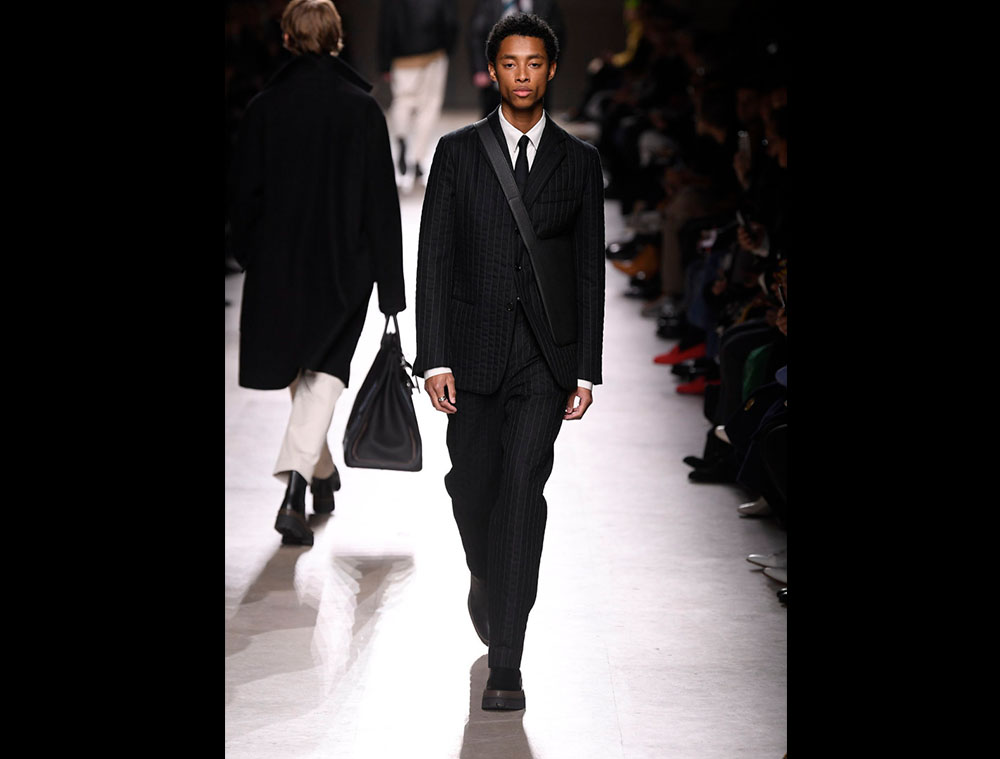
Hermès Men’s Autumn 2020
Anda Rowland, owner of Savile Row tailor Anderson & Sheppard, has also seen a return to a more tailored aesthetic brewing for a few season. “What we have seen with some of our best dressed younger customers is a mixture of tailoring and streetwear. Customers are more adventurous with their cloth choices and may choose less formal materials such as heavy cottons, jerseys or corduroys and brighter colours rather than the classic worsted wool cloths. Flannels work well as they can be dressed slightly less formally.
“We believe that the general trend toward more structured men’s clothing and toward mixing streetwear/ath-leisure with tailoring will continue despite the current disastrous situation. Many of our customers wear their tailored clothing for social occasions and out of work as dress codes at the office are far more relaxed and they will continue to be when normal life resumes.”
Although Rowland expects men to be cautious in their spending when the crisis abates, she believes they will gravitate toward comfort, which she said is “very addictive, and we believe that the power suit will be more softly tailored than its Eighties ancestor — men are used to moving freely and are expecting their suit to work for them across a wide variety of occasions. Also, we expect materials to be harder-wearing given the technical improvements brought in by the woollen mills over the last few years.”
But on a more serious note, with so many millions now unemployed, when they are back out interviewing for jobs, they’ll need to look professional. “A great-fitting suit will undoubtedly help them stand out from the competition,” he said.
Retailers Expect Sales Bump
The retail community is hopeful that heightened demand for tailored clothing will help spur much-needed business for them as well. Face it, after months of their stores being closed and relying on whatever business they could get from their e-commerce sites, retailers — at least the ones that will survive the pandemic — will be desperately searching for any sector that can get consumers back into stores and generate revenues.
Sam Kershaw, buying director for Mr Porter, is bullish on tailored clothing for Autumn (our Spring).
“After several years of a streetwear-dominated runway, we saw such fantastic suiting in January,” he said. “From slim-cut silhouettes at Givenchy and Valentino, to classic Italian tailoring from Canali, it was clear that tailoring is back, and in a considered, varied way.
“At Mr Porter, we’ve gotten behind the classically relaxed styles from brands like Brunello Cucinelli and Loro Piana, as well as the Seventies-esque silhouettes from Tom Ford and Tod’s. Later in the year, we’ll also be launching our third ‘costume to collection’ collaboration for our own label Kingsman, which is inspired by the forthcoming film, ‘The King’s Man.’ What will be evident come Autumn is that we’ve made a commitment to tailoring, as well as the diversity on offer from our brands.”
That diversity will be evident through a number of different trends. “The power suit of 2020 is less about a specific style or block, and more about the wearability and swagger of the approach,” he believes. “Whether it’s sharp and structured or relaxed and unstructured, the new power suit is in the eye of the beholder.
“Look at The Row, whose modern approach to traditional tailoring has created a new standard in impeccable suiting; Ermenegildo Zegna, who is collaborating with streetwear brand Fear of God, and Ralph Lauren, whose double-breasted suits look like they were made for Jimmy Stewart or Cary Grant. All three brands fall on different points of the suiting spectrum, and perfectly embody what’s exciting about today’s chop-and-change approach to wearing tailoring,” said Kershaw.
Federico Barassi, vice president of men’s wear buying for Ssense, said the company started seeing “an industry shift toward tailoring for a little over two seasons now. Styles that are emblematic of streetwear, like hoodies and T-shirts will always be relevant, but designers are moving the focus of their collections toward more tailored and timeless pieces. Ermenegildo Zegna and Jerry Lorenzo’s collaboration is an example of how tailored clothing can pull from streetwear codes in an unexpected way.”
He said that even during the stay-at-home orders, many men are “still maintaining an office wardrobe for meetings and video calls. That said, the tailoring focus will organically continue to grow season over season; I don’t think the current circumstances will impact future demand for tailored goods.”
Barassi said the Ssense customer has been “gravitating toward building their wardrobes with staples like a classic overcoat, and well-cut trousers for quite a few seasons. This Spring, they’ll continue to elevate through more tailored pieces such as double-breasted blazers and leather details. We saw a lot of tailoring on spring/summer ’20 runways and shows, like at Bottega Veneta, so that will definitely influence people’s buying behaviours as well.”
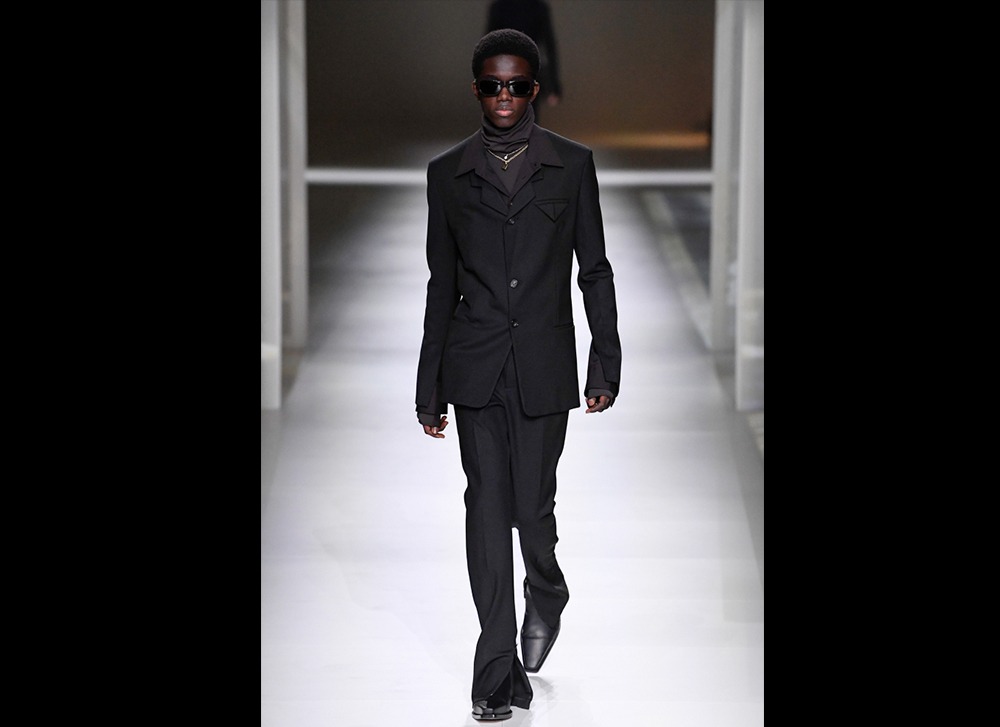
Bottega Veneta RTW Autumn 2020
So pairing a wide-leg trouser with a fitted jacket, for example, with detailing such as notch lapels on the jacket, layered over a hoodie or turtleneck, will define the power suit of 2020 for the Ssense customer, he believes.
According to Bosse Myhr, director of men’s and women’s wear at Selfridges, “The tailored approach that a lot of brands have been applying for their autumn/winter ‘20 show collections is going to have an impact on the way people style streetwear. I think the important thing to remember is that, yes, there was more tailoring in the shows, but it’s very far away from the uniformed suit, shirt and tie. I think the future of tailoring is in its relaxed attitude, be that in the styling or the cut. I do think there is a chance that casual Friday will be replaced by dress-up Fridays.”
Nelson Mui, merchandising director for fashion at Hong Kong’s Lane Crawford, believes, “Ath-leisure and streetwear will always have universal appeal — you can’t unlearn comfort — but designers and luxury brands have been exploring creative ways to do tailoring: part of an overall mood toward more polished dressing. We are particularly excited about the Fear of God x Zegna collaboration, the idea of melding a street sensibility to traditional tailored codes. This is a very fashion concept.”
Mui added that “Zoom parties notwithstanding, the pandemic certainly reduced a lot of occasions to wear tailored clothing. But in times of economic uncertainty, with a good number of people out of work or worried about losing jobs, there’s a security to dressing up. Most men feel more confident and authoritative when they are in a sharp-looking suit. There was a time when it seemed tailored clothing was obsolete: remember casual Fridays in the Nineties and the rise of corporate casual? But the rise of the slim fit suit gave a new generation of guys in the 2000s a boost of confidence and fashion/sex appeal. What favours this trend toward tailored again is that people are looking for more investment pieces and fewer micro-trends, hype, and steady stream of drops. It takes less effort and money to put on a suit that you can wear over two or three years.”
Chris Kyvetos, men’s wear buying director for MyTheresa, said that for the past 18 months, streetwear has been “getting tired” and the industry is “naturally gravitating back toward a more-classic luxury direction. As an industry, when we reach saturation, we crave freshness.”
He said when deciding to launch Mytheresa Men for spring/summer ’20, “we took the view of no streetwear, and it’s worked exceptionally well for us. Going forward we see a heavily tailored influence in post-streetwear luxury. However, we are not planning on selling suits instead of sweatshirts, so some of the runway [collections] and collaborations I’m seeing between the two worlds are a bit literal and won’t go very far.”
He believes that for Autumn, tailored clothing will need to be fresh and new, such as Bottega Veneta’s tailored nylon jackets or Kiko Kostadinov’s tailored outerwear. But if a brand has its roots in streetwear and is pivoting to tailoring to catch a trend, that’s an example of being “too literal and irrelevant,” he said.
During the streetwear years, he said, “men’s fashion lost context,” and when people resume their “normal” activities, “it stands to reason that they will crave something new. It could be a job, a holiday, a personal trainer, an apartment, a dog or a jacket.”
Of course, who knows what the male consumer — or any consumer — will want to buy coming out of the global crisis (beyond more toilet paper and disinfectant, that is)?
While brands and retailers are bullish about the suit for Spring, it must be remembered that their orders were placed in January, as the coronavirus was only just beginning to spread in China. Orders were based on those fundamentals and the idea that a male shopper who was already spending more than ever would continue to spend. Given that, they felt confident about moving away from baggy and roomy streetwear toward a more tailored look.
So men’s store floors and web sites come Spring will be heavily slanted toward suits and sport jackets, albeit 21st-century versions. All brands and retailers can hope is that in a world that will never be the same again, even post-COVID-19, men will still go back to feeling about fashion the way they did a mere four months ago.
Subscribe to the Newsletter
Recommended for you
6 Movies That All Style-Obsessed Guys Should Watch, From ‘Miami Vice’ to ‘After Hours’
Style writer David Coggins on Hollywood’s best under-the-radar menswear inspirations.
May 1, 2024
Shifting into Neutral This Season
How to Rock a Neutral Selection of Menswear This Autumn.
By Zeb Daemen
April 22, 2024
You may also like.
You may also like.
Minerality in Wine, Explained: How It Affects Taste, Aroma and Texture
And an exploration of the regions that produce great mineral-driven varietals.
If you have taken part in a wine tasting, read an article about wine, or even glanced at the back label of a bottle of wine, you have likely encountered the word minerality. But defining what that means exactly is where the problems can start—even wine experts disagree on what it is and how it expresses itself in the glass.
Minerality refers to a flavour profile and often a palpable sensation in the mouth. The flavours generally involve rocks or fossils, such as stone, river rock, flint, gravel, slate, asphalt and oyster shell. There is also a sense of salinity, often derived from volcanic soils, that is a component of mineral-driven wines. This is different from other earthy flavours such as forest floor or peat. When we host tastings, very few people will own up to having licked rocks as a child, but almost everyone has gotten a stray bit of oyster or clam shell in their mouth and can recall the taste and texture. Most of us can remember the scent of a chalkboard or pencil lead from our childhood, and even those who have never fired a gun are familiar with flint or gunpowder from firecrackers.
When minerality is discussed, it is often a quality ascribed to white wine such as Riesling, Assyrtiko, Sauvignon Blanc or Burgundian Chardonnay. We may not hear about minerality in red wine so much because the oak used for maturation may mask the flavours and aromas associated with minerality. However, two reds sometimes described as having mineral qualities are those from the volcanic soils of Mount Etna in Sicily and the shale and quartz vineyards of Priorat in Spain. A prime example of the mineral-driven style is Chablis in the northernmost reaches of Burgundy, whose wines are made with 100 percent Chardonnay. The wines have a distinctly different character than the oaky, buttery style prevalent in Napa Valley and further south in Burgundy.
Walking through the vineyards of Chablis you can see abundant fossilised oyster shells that date back 150 million years to the Upper Jurassic period, when this area was at the bottom of the sea. Dig a bit; you will find calcified ammonites and spiral-shaped cephalopods from the same era. While vineyard soil is a discussion for another day, the grey limestone here is called Kimmeridgian, named for the village of Kimmeridge in Dorset, England, where it was first identified. As Thierry Bellicaud, president of Domaine Laroche in Chablis told Robb Report, “The Kimmeridgian limestone soil, which is unique to this area, delivers all needed nutrients for the balance of the vines. The terroir nurtures the vines which then express its personality in the grapes.”

DOMAINE LAROCHE, CHABLIS, FRANCE
Asked how soil composition influences one of Domaine Laroche’s wines, Bellicaud referenced its Chablis Grand Cru Les Blanchots, “Les Blanchots is a unique terroir made of a layer of white clay on Kimmeridgian limestone with ammonites. This is the ideal combination to keep the right amount of water for the roots. The southeast exposure allows slow ripening and favours aroma development. It is one of the areas in the appellation where you can easily find oyster fossils (called Exogyra virgula). The Grand Cru Les Blanchots is delicate, refined and silky in texture.”
Assyrtiko from Santorini is almost always described as possessing a mineral quality as well as a touch of salinity, which can be attributed to the black volcanic soil in which it grows as well as to the Aegean Seaspray that wafts over the island’s vineyards. Mosel Valley Riesling’s leanness and flinty character come from the red and blue limestone in which it is cultivated.
Italy’s Soave region is also known for the minerality of its wine. Alessio Inama, third-generation family leader and director of sales, marketing and communication at Inama Azienda Agricola, told Robb Report, “Soave Classico is a volcanic region with soil made up of basaltic rocks, volcanic tuffs and ashes that date back 30 million years. The soils offer minerals in their natural form, which impact the composition of the plants themselves. In the case of grape vines, the soils have a major influence on the resulting flavours of the wines, which are mineral and floral.”
Known for their scrupulous mapping of micro-plots within their vineyards, the Inamas produce several different Soave wines made with the Garganega grape. Inama I Palchi Foscarino Grande Cuvée Soave DOC is crafted from the family’s best plots on Monte Foscarino. Inama explained, “The soil of Foscarino is a mix of pure magma, ashes and basaltic rocks that deteriorated over millions of years into a dark clay that is extremely rich in minerals. The grapes from those 40-year-old vines have strong personality, great intensity and texture, delivering a complex bouquet of white flowers, citrus notes and flinty sensations.”

SCALA DEI, PRIORAT, SPAIN
While the sensation of minerality can be less obvious in red wines, Spanish Garnacha and Sicilian Nerello Mascalese are two grapes that often exhibit it, thanks to both the locales from which they hail as well as the often-judicious use of oak. The slopes of eastern Sicily’s Mount Etna are covered with volcanic soils composed of pumice, black ash and basalt. Priorat, a region close to Barcelona in northeast Spain, is blessed with black quartz, slate and mica soils called llicorella. Here you will find vineyards covered with small fragments of black and grey striated rock sitting atop blue and red soils embedded with the same.
Ricard Rofes, winemaker at Scala Dei in Priorat, refers to its Mas Deu vineyard as one of the winery’s “jewels.” The origin of Scala Dei Tribut and Masdeu, it sits 800 meters (2,625 feet) above sea level. Rofes told Robb Report, “In this elevated area the clay and limestone soils are ideal for growing Grenache, giving the wine that touch of acidity and freshness that makes it unique. The red-clay soils and the altitude of the vineyards located in the lap of the Sierra de Montsant give it freshness and the llicorella soils impart a genuine imprint. Our wine is the pure expression of the fruit and the terroir with a distinct personality.”
You may also like.
Best fo Europe: Six Senses, Switzerland
Mend in the mountains at Crans-Montana.
Wellness pioneer Six Senses made a name for itself with tranquil, mostly tropical destinations. Now, its first alpine hotel recreates that signature mix of sustainable luxury and innovative spa therapeutics in a world-class ski setting.
The ski-in, ski-out location above the gondola of one of Switzerland’s largest winter sports resorts allows guests to schuss from the top of the Plaine Morte glacier to the hotel’s piste-side lounge, where they can swap ski gear for slippers, then head straight to the spa’s bio-hack recovery area to recharge with compression boots, binaural beats and an herb-spiked mocktail. In summer, the region is a golf and hiking hub.
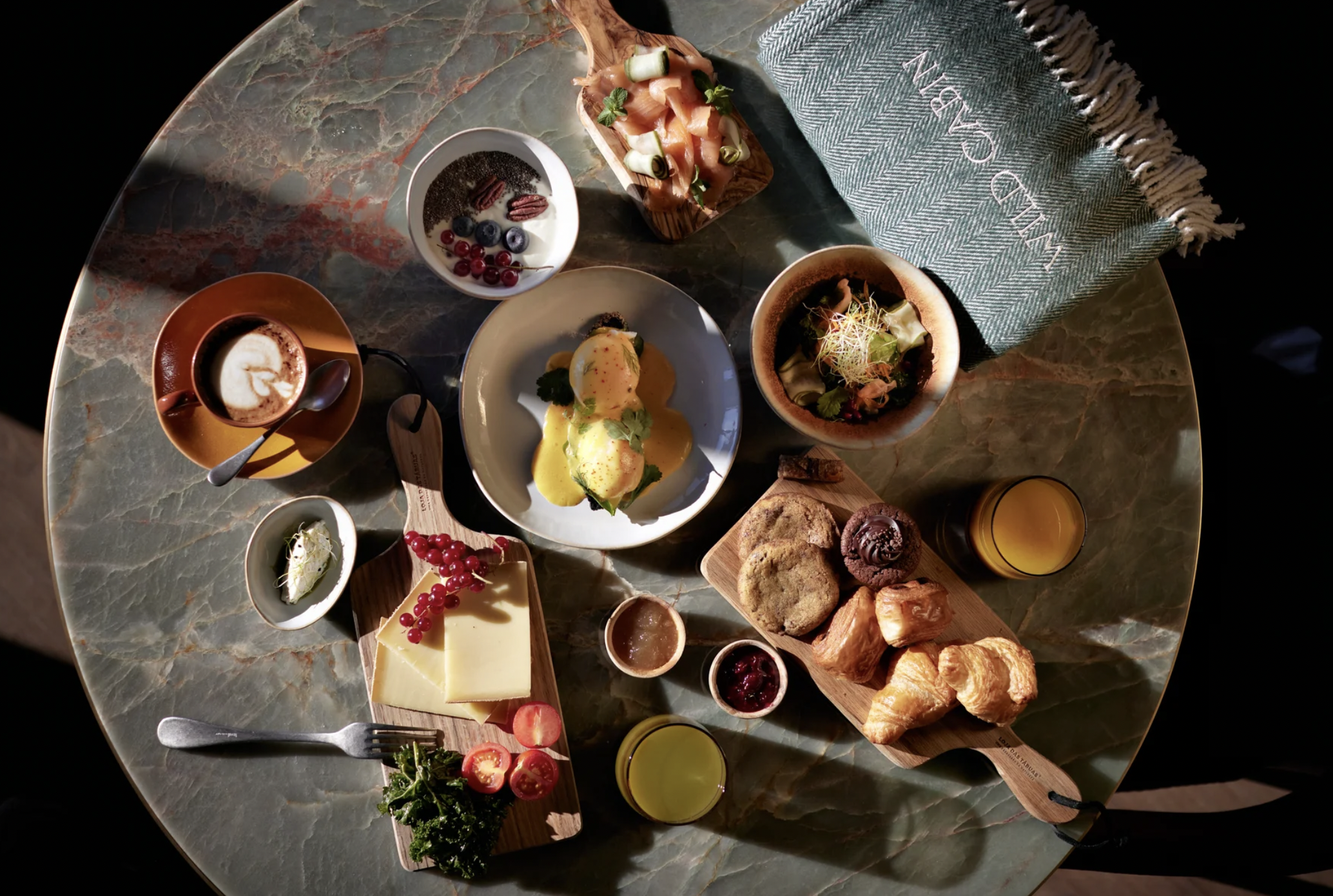
The vibe offers a contemporary take on chalet style. The 78 rooms and suites are decorated in local larch and oak, and all have terraces or balconies with alpine views over the likes of the Matterhorn and Mont Blanc. With four different saunas, a sensory flotation pod, two pools
and a whimsical relaxation area complete with 15,000 hanging “icicles” and views of a birch forest, the spa at Six Senses Crans-Montana makes après ski an afterthought.
You can even sidestep the cheese-heavy cuisine of this region in favour of hot pots and sushi at the property’s Japanese restaurant, Byakko. Doubles from around $1,205; Sixsenses.com
You may also like.
Watch of the Week: TAG Heuer Formula 1 | Kith
The legendary sports watch returns, but with an unexpected twist.
Over the last few years, watch pundits have predicted the return of the eccentric TAG Heuer Formula 1, in some shape or form. It was all but confirmed when TAG Heuer’s heritage director, Nicholas Biebuyck, teased a slew of vintage models on his Instagram account in the aftermath of last year’s Watches & Wonders 2023 in Geneva. And when speaking with Frédéric Arnault at last year’s trade fair, the former CEO asked me directly if the brand were to relaunch its legacy Formula 1 collection, loved by collectors globally, how should they go about it?
My answer to the baited entreaty definitely didn’t mention a collaboration with Ronnie Fieg of Kith, one of the world’s biggest streetwear fashion labels. Still, here we are: the TAG Heuer Formula 1 is officially back and as colourful as ever.
As the watch industry enters its hype era—in recent years, we’ve seen MoonSwatches, Scuba Fifty Fathoms, and John Mayer G-Shocks—the new Formula 1 x Kith collaboration might be the coolest yet.

Here’s the lowdown: overnight, TAG Heuer, together with Kith, took to socials to unveil a special, limited-edition collection of Formula 1 timepieces, inspired by the original collection from the 1980s. There are 10 new watches, all limited, with some designed on a stainless steel bracelet and some on an upgraded rubber strap; both options nod to the originals.
Seven are exclusive to Kith and its global stores (New York, Los Angeles, Miami, Hawaii, Tokyo, Toronto, and Paris, to be specific), and are made in an abundance of colours. Two are exclusive to TAG Heuer; and one is “shared” between TAG Heuer and Kith—this is a highlight of the collection, in our opinion. A faithful play on the original composite quartz watch from 1986, this model, limited to just 1,350 pieces globally, features the classic black bezel with red accents, a stainless steel bracelet, and that creamy eggshell dial, in all of its vintage-inspired glory. There’s no doubt that this particular model will present as pure nostalgia for those old enough to remember when the original TAG Heuer Formula 1 made its debut.

Of course, throughout the collection, Fieg’s design cues are punctuated: the “TAG” is replaced with “Kith,” forming a contentious new brand name for this specific release, as well as Kith’s slogan, “Just Us.”
Collectors and purists alike will appreciate the dedication to the original Formula 1 collection: features like the 35mm Arnite cases—sourced from the original 80s-era supplier—the form hour hand, a triangle with a dot inside at 12 o’clock, indices that alternate every quarter between shields and dots, and a contrasting minuterie, are all welcomed design specs that make this collaboration so great.
Every TAG Heuer Formula 1 | Kith timepiece will be presented in an eye-catching box that complements the fun and colour theme of Formula 1 but drives home the premium status of this collaboration. On that note, at $2,200 a piece, this isn’t exactly an approachable quartz watch but reflects the exclusive nature of Fieg’s Kith brand and the pieces he designs (largely limited-edition).

So, what do we think? It’s important not to understate the significance of the arrival of the TAG Heuer Formula 1 in 1986, in what would prove integral in setting up the brand for success throughout the 90’s—it was the very first watch collection to have “TAG Heuer” branding, after all—but also in helping to establish a new generation of watch consumer. Like Fieg, many millennial enthusiasts will recall their sentimental ties with the Formula 1, often their first timepiece in their horological journey.
This is as faithful of a reissue as we’ll get from TAG Heuer right now, and budding watch fans should be pleased with the result. To TAG Heuer’s credit, a great deal of research has gone into perfecting and replicating this iconic collection’s proportions, materials, and aesthetic for the modern-day consumer. Sure, it would have been nice to see a full lume dial, a distinguishing feature on some of the original pieces—why this wasn’t done is lost on me—and perhaps a more approachable price point, but there’s no doubt these will become an instant hit in the days to come.
—
The TAG Heuer Formula 1 | Kith collection will be available on Friday, May 3rd, exclusively in-store at select TAG Heuer and Kith locations in Miami, and available starting Monday, May 6th, at select TAG Heuer boutiques, all Kith shops, and online at Kith.com. To see the full collection, visit tagheuer.com
You may also like.
Best of Europe: Grand Hotel Des Étrangers
Fall for a Baroque beauty in Syracuse, Italy.
Sicily has seen a White Lotus–fuelled surge in bookings for this summer—a pop-culture fillip to fill up its grandes dames hotels. Skip the gawping crowds at the headline-grabbers, though, and opt instead for an insider-ish alternative: the Grand Hotel des Étrangers, which reopened last summer after a gut renovation.
It sits on the seafront on the tiny island of Ortigia in Syracuse, all cobbled streets and grand buildings, like a Baroque time capsule on Sicily’s southeastern coast.
Survey the entire streetscape here from the all-day rooftop bar-restaurant, Clou, where the fusion menu is a shorthand of Sicily’s pan-Mediterranean history; try the spaghetti with bottarga and wild fennel or the sea bass crusted in anchovies. Idle on the terrace alfresco with a snifter of avola, the rum made nearby.

As for the rooms, they’ve been renovated with Art Deco–inflected interiors—think plenty of parquet and marble—but the main asset is their aspect: the best of them have private balconies and a palm tree-fringed view out over the Ionian Sea. Doubles from around $665; desetranger.com
You may also like.
8 Fascinating Facts You Didn’t Know About Aston Martin
The British sports car company is most famous as the vehicle of choice for James Bond, but Aston Martin has an interesting history beyond 007.
Aston Martin will forever be associated with James Bond, ever since everyone’s favourite spy took delivery of his signature silver DB5 in the 1964 film Goldfinger. But there’s a lot more to the history of this famed British sports car brand beyond its association with the fictional British Secret Service agent.
Let’s dive into the long and colourful history of Aston Martin.






